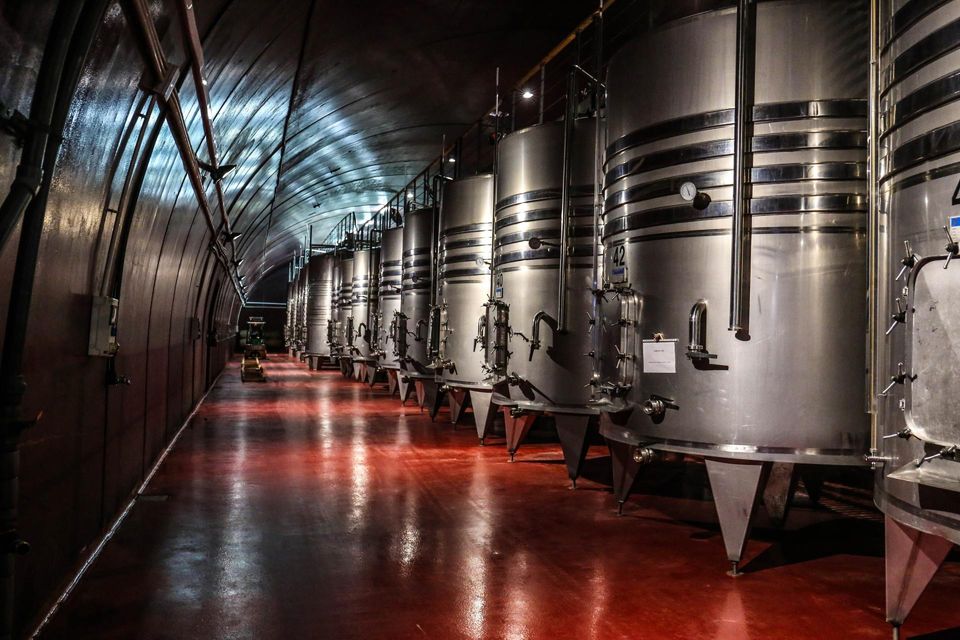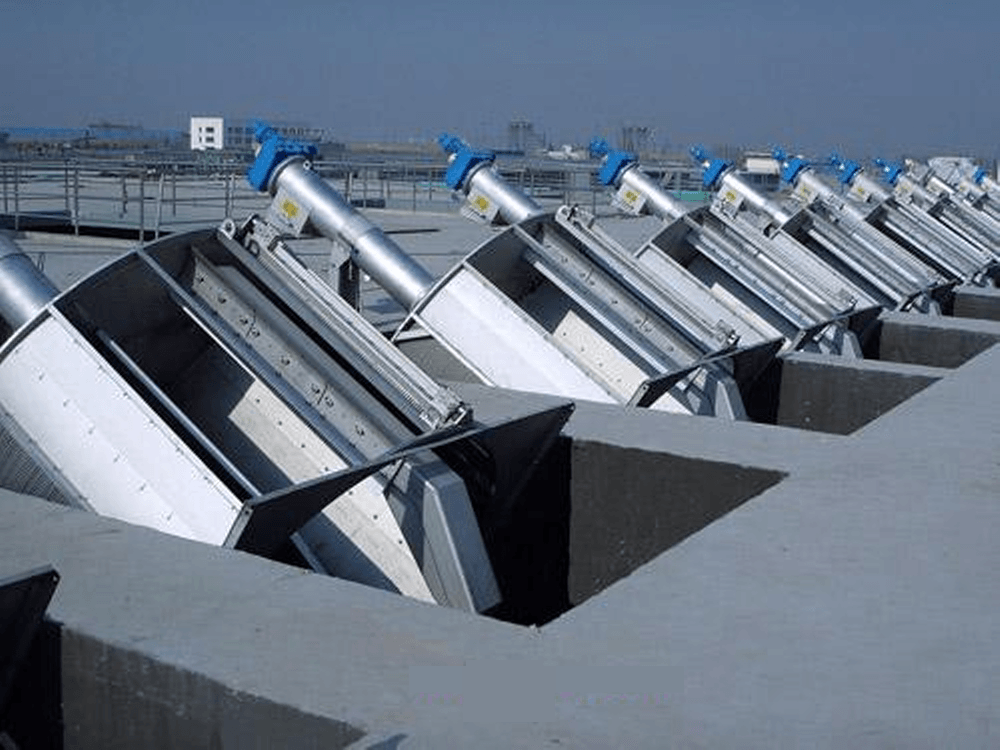Why should we treat our wastewater?
Stephen Nguyen • May 3, 2021
1. Overview of wastewater treatment issues
This is the process of removing pollutants from the waste water such as household waste water (also known as domestic waste water), waste water from commercial and institutional activities or from the manufacturing proces.....of agencies, organizations and businesses.
Why treating our wastewater?
Purpose treatment to remove pollutants and produce wastewater is treated safely with the environment. The most important purpose is recycling recycled water. At present, surface water and groundwater are severely polluted. Thousands die every year because of diseases related to the use of polluted water, which directly affects the health of users. That is why sewage needs to be treated.
Does the company have to treat the amount of waste generated in the production process?
The answer to the question above is "yes". Wastewater treatment is compulsory for all activities that form wastewater. This is a state-issued regulation for the purpose of protecting the environment as well as managing the problem of water treatment in the production process of enterprises and agencies using water. Managed and monitored closely by the Department of Environmental Resources and Environmental Management. Depending on the area of operation (residential area or industrial zone), there will be different management plans.
This is the process of removing pollutants from the waste water such as household waste water (also known as domestic waste water), waste water from commercial and institutional activities or from the manufacturing proces.....of agencies, organizations and businesses.
Why treating our wastewater?
Purpose treatment to remove pollutants and produce wastewater is treated safely with the environment. The most important purpose is recycling recycled water. At present, surface water and groundwater are severely polluted. Thousands die every year because of diseases related to the use of polluted water, which directly affects the health of users. That is why sewage needs to be treated.
Does the company have to treat the amount of waste generated in the production process?
The answer to the question above is "yes". Wastewater treatment is compulsory for all activities that form wastewater. This is a state-issued regulation for the purpose of protecting the environment as well as managing the problem of water treatment in the production process of enterprises and agencies using water. Managed and monitored closely by the Department of Environmental Resources and Environmental Management. Depending on the area of operation (residential area or industrial zone), there will be different management plans.

Almost all industries involving production activities will incur wastewater. It is the responsibility of the owners of factories, industrial zones to treat the wastewater before discharging to the environment.
2. Where does wastewater come from?
Wastewater comes from sources such as:
- From daily activities. Waste generated by residential areas includes household waste streams from toilets, bathrooms, kitchens, sinks, etc. Most are disposed of through sewers.
- From the textile and dyeing industry, the textile and dyeing technology nowadays uses a large amount of water for the production stages and at the same time discharges an average amount of wastewater of 12-300 m3 / ton of fabric. In particular, the main source of pollution is sewage, textile dyeing and bleaching. Wastewater has a pH of 9-12, high organic content (up to 3000 mg / l), color intensity of less than 1000 Pt - Co, SS content can be 2000 mg / l. In addition, textile wastewater will be different when using different raw materials (eg wool and raw cotton will release natural fibers, wastewater with color, alkalinity, BOD and High suspended solids (SS).
- From the seafood processing industry, wastewater from aquatic product processing has COD, BOD5 concentration, suspended solids, total nitrogen, and phosphorus. Wastewater with high biofertilizer capacity is shown by BOD / COD ratios, which generally range from 0.6 to 0.9. Particularly for wastewater generated from catfish processing with very high levels of oil and fat from 250 to 830 mg / L. The concentration of phosphorus in shrimp wastewater can be very high up to 120 mg / L.
- From the livestock industry, it is estimated that 25-30 million cubic feet of liquid waste (liquid manure, urine, and cleaning fluid) can be emitted. Of which, about 50% of solid waste (36.5 million tons), 80% of liquid waste (20-24 million m3) discharged directly into the environment or using untreated will pollute the environment. serious.
- From industry (light industry, heavy industry, and chemical industry): The main elements in the composition of industrial wastewater are C, H, O, N. Impurities in wastewater include: Inorganic and organic. They exist in the form of sediments; non-settable solids are glacial and colloid. Organic compounds can exist in soluble, colloidal, insoluble, volatile, non-volatile, biodegradable, biodegradable forms.
- From the health sector, medical wastewater contains organic substances, nutrients of nitrogen (N), phosphorus (P), suspended solids, germs, Salmonella, staphylococcus, streptococcus, gastroenteritis, poliomyelitis, parasites, amoeba, fungus...Other biological pathogens in the blood, pus, fluid, sputum, Toxins from the body and preparations for treatment, even radioactive.
- From daily activities. Waste generated by residential areas includes household waste streams from toilets, bathrooms, kitchens, sinks, etc. Most are disposed of through sewers.
- From the textile and dyeing industry, the textile and dyeing technology nowadays uses a large amount of water for the production stages and at the same time discharges an average amount of wastewater of 12-300 m3 / ton of fabric. In particular, the main source of pollution is sewage, textile dyeing and bleaching. Wastewater has a pH of 9-12, high organic content (up to 3000 mg / l), color intensity of less than 1000 Pt - Co, SS content can be 2000 mg / l. In addition, textile wastewater will be different when using different raw materials (eg wool and raw cotton will release natural fibers, wastewater with color, alkalinity, BOD and High suspended solids (SS).
- From the seafood processing industry, wastewater from aquatic product processing has COD, BOD5 concentration, suspended solids, total nitrogen, and phosphorus. Wastewater with high biofertilizer capacity is shown by BOD / COD ratios, which generally range from 0.6 to 0.9. Particularly for wastewater generated from catfish processing with very high levels of oil and fat from 250 to 830 mg / L. The concentration of phosphorus in shrimp wastewater can be very high up to 120 mg / L.
- From the livestock industry, it is estimated that 25-30 million cubic feet of liquid waste (liquid manure, urine, and cleaning fluid) can be emitted. Of which, about 50% of solid waste (36.5 million tons), 80% of liquid waste (20-24 million m3) discharged directly into the environment or using untreated will pollute the environment. serious.
- From industry (light industry, heavy industry, and chemical industry): The main elements in the composition of industrial wastewater are C, H, O, N. Impurities in wastewater include: Inorganic and organic. They exist in the form of sediments; non-settable solids are glacial and colloid. Organic compounds can exist in soluble, colloidal, insoluble, volatile, non-volatile, biodegradable, biodegradable forms.
- From the health sector, medical wastewater contains organic substances, nutrients of nitrogen (N), phosphorus (P), suspended solids, germs, Salmonella, staphylococcus, streptococcus, gastroenteritis, poliomyelitis, parasites, amoeba, fungus...Other biological pathogens in the blood, pus, fluid, sputum, Toxins from the body and preparations for treatment, even radioactive.

3. The need to treat the amount of wastewater generated during the production process
- First, it is the law. If the wastewater is not disposed of correctly, the enterprise will be subject to administrative sanctions and under strict control of the local environmental authority.
- Next is to help the position of the business standing in the hearts of consumers. Wastewater treated safely also means that the production environment of the product is guaranteed.
- The next is to create confidence for workers. Wastewater is not a lot of toxic pollutants...... can affect the health of workers and may also be life threatening.
- Finally, wastewater treatment contributes greatly to environmental protection.
Together to help protect our common house by the most useful approach is "TREATING OUR WASTEWATER".
- First, it is the law. If the wastewater is not disposed of correctly, the enterprise will be subject to administrative sanctions and under strict control of the local environmental authority.
- Next is to help the position of the business standing in the hearts of consumers. Wastewater treated safely also means that the production environment of the product is guaranteed.
- The next is to create confidence for workers. Wastewater is not a lot of toxic pollutants...... can affect the health of workers and may also be life threatening.
- Finally, wastewater treatment contributes greatly to environmental protection.
Together to help protect our common house by the most useful approach is "TREATING OUR WASTEWATER".

In the development of science and technology, Water purification technology, in general, and wastewater treatment technologies, in p articular, are constantly improving with superior technologies to help treat and clean the environment. The following is a summary of wastewater treatment technologies that are widely applied today: 1 . Course treatment by simple mechanical methods Industrial wastewater, as well as domestic wastewater often contains dissolved and insoluble substances in the form of suspended particles. The suspended impurities can be solid and liquid, forming a suspension with water. To separate trash and suspended particles from wastewater, mechanical processes (interrupted or continuous) are usually used: filter through bars or mesh, settle under the effect of gravity or centrifugal force and filtration. The choice of treatment method depends on the particles, physical, and chemical properties, suspended particle concentration, wastewater flow and required cleaning level. Mechanical treatment is a method aimed at removing and separating insoluble substances and colloidal substances from wastewater. The treatment works include: • The trash rack/screen (coarse net) is operated manually • Trash rack/screen (fine filter net) operates automatically • Air conditioning tank stabilizes the flow • First phase sedimentation tank and 2nd phase sedimentation tank separate suspended sediments. Mechanical treatment can remove up to 60% of insoluble impurities and reduce pollutants capable of biodegradable (BOD) up to 20% 1.1. Filter through screens or nets This is a preliminary treatment. The purpose of the process is to remove all the objects present in the wastewater that can cause problems in the operation of the wastewater system such as clogging pumps, pipes, or canals. This is an important step in ensuring safety and creating favorable conditions for the whole system. I.2.1.1 Garbage Barrier Wastewater transported to cleaning works must first pass-through trash rack. At the trash rack, raw impurities such as trash, nylon bags, fruit peels, rags, wood, and other objects are retained to ensure stable operation of pumps and wastewater treatment facilities. This is an important step to guarantee the safety of the entire wastewater treatment system.


